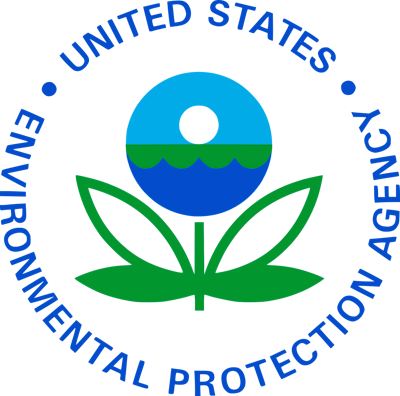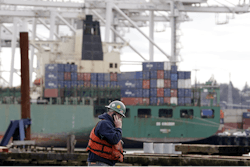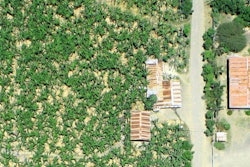
Four northwest companies have agreed to follow federal requirements when it comes to reporting the storage, handling, and accidental release of hazardous chemicals, the U.S. Environmental Protection Agency (EPA) announced. The companies have agreed to correct the violations and pay fines. The firms are Dickinson Frozen Foods, Inc., Sugar City, Idaho, Apple King, LLC, Yakima, Wash., Stack Metallurgical Services, Inc., Portland, Ore. and Wind Flow Fertilizer, Inc., Mattawa, Wash.
Two of the firms, Dickinson Frozen Foods, Inc. and Stack Metallurgical Services, Inc., violated the hazardous chemical release reporting requirements of the Emergency Planning and Community Right-to-Know Act (EPCRA) and the Comprehensive Environmental Response, Compensation, and Liability Act (CERCLA). The companies failed to report releases of ammonia (over reporting thresholds) at their facilities in a timely way. The two other firms, Apple King and Wind Flow Fertilizer, violated the hazardous chemical inventory reporting requirements of EPCRA. The four companies collectively paid $166,555 in penalties as part of the settlements.
“First responders and communities depend on accurate chemical storage information and quick release reporting when accidents occur,” said Kelly McFadden, manager of the pesticides and toxics unit in the EPA Seattle, Wash. office. “These laws are designed to ensure that responsible emergency preparedness, diligent record-keeping and quick reporting will help minimize health risks if the unthinkable happens.”
EPCRA was passed by Congress in 1986, in response to concerns about environmental and safety hazards posed by the storage and handling of toxic chemicals. The law’s passage followed the 1984 disaster in Bhopal, India, where a Methyl isocyanate release killed or severely injured more than 2000 people.
On Dec. 5, 2014, Region 10 settled with Dickinson Frozen Foods, Inc. for violations of the EPCRA and the CERCLA. On Feb. 15, 2014, the company released 500 pounds of anhydrous ammonia and failed to immediately notify federal and state authorities. EPCRA Section 304 and CERCLA Section 103 require companies to immediately report unregulated releases that exceed the reportable quantity (100 pounds for ammonia). The company agreed to pay a penalty of $20,150.
On Jan. 28, 2015, Region 10 settled with Apple King, LLC for violations of Section 312 of the EPCRA for failing to file its annual Tier II Hazardous Chemical Inventory Reports for four years for anhydrous ammonia at its facility. EPCRA Section 312 requires companies to file a hazardous chemical inventory report form with the State Emergency Response Commission, the local emergency planning committee and the local fire department each year by March 1. The company agreed to pay a penalty of $65,709.91.
On July 29, 2014, Region 10 settled with Stack Metallurgical Services, Inc. for violations of the EPCRA and the CERCLA. On Oct. 20, 2013 the company released 412 pounds of anhydrous ammonia and failed to immediately notify federal and state authorities. EPCRA Section 304 and CERCLA Section 103 require companies to immediately report releases of hazardous and extremely hazardous substances that exceed the reportable quantity (100 pounds for ammonia). The company agreed to pay a penalty of $17,710.
On Jan. 15, 2015, Region 10 settled with Wind Flow Fertilizer, Inc. for violations of Section 312 of the EPCRA for failing to file its annual Tier II Hazardous Chemical Inventory Reports for two years for aldicarb, paraquat dichloride, and 24 other chemicals at its facility. EPCRA Section 312 requires companies to file hazardous chemical inventory report forms with the State Emergency Response Commission, the local emergency planning committee, and the local fire department each year by March 1. The company agreed to pay a penalty of $62,985.
For more information on the Emergency Planning and Community-Right-to-Know Act, visit: http://www2.epa.gov/epcra-tier-i-and-tier-ii-reporting

















